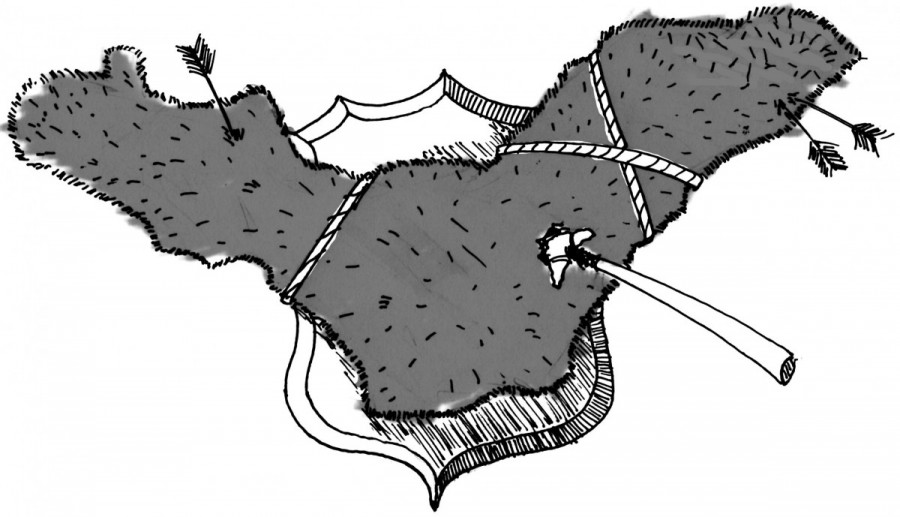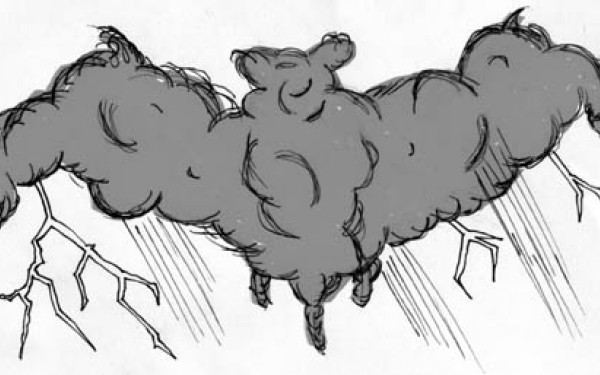Montreal, Stuff’d + Mounted
Gail Scott’s The Obituary Exalts the City, Challenges the Reader
Everything is alive in The Obituary, moving and shuffling and existing in the space Gail Scott creates. The novel, however, is not for everyone.
The Obituary is Gail Scott’s sixth novel. Scott is also a translator, and her translation of Michael Delisle’s The Sailor’s Disquiet saw her nominated for a Governor General award in 2001.
The Obituary, her first work since 2004, feels like it could use a translation of its own. It follows narrator Rosine, a historian, through Montreal, delving into the intimate details of speech, character and location to a degree that often threatens to leave the uncareful reader behind entirely.
Someone unfamiliar with the Montreal cityscape will have a hard time getting around in The Obituary. Places and their inhabitants are described with such care that it seems as though they are extensions of the city designed to encourage affection, as if to draw readers into the locations by using the individuals. Gail Scott allows readers to accompany her characters in a study of what it is to be in Montreal.
For someone who hails from another town, however, the places remain largely inaccessible; streets, bars, areas of housing: these are all unrecognizable, and the proper names, normally the only tangible items which might allow such readers a place to rest, are often disguised to dizzying degrees. (St. Joseph Blvd., for instance, is referred to as Dada-Jesus.)
The characters in the novel, even those who are fleeting and merely seen during a bus ride by “R,” as Rosine identifies herself, are brought to life with such exact detail that they prove to be vivid and welcome additions to the text.
Occasionally, however, it is a little confusing as to which character is being followed, or whether or not it is the narrator speaking. Clues like the inclusion of “X” and the use of terms like “Dear Reader” provide some guidance, but Scott hardly takes readers by the hand. This is not necessarily to be frowned upon, though.
A man whose pants keep falling down; a woman standing at a street corner waiting for the lights whose chocolate lab persistently nuzzles her; some woman in a bar who sits “…two stools down yelling meeting someone HARD. Especially if over 39! Were we not all eternally that? I.e., bedding down with Good Vibrations.”
These characters are just a few in an elaborate portrait of Montreal life. Never is a character flat, stock or expected, and in some ways, those details become the most pressing and fascinating information. The presence of those who are not quite there, but linger on in the memories and desires of the characters, is also felt poignantly.
However brilliant the characters may prove, certain linguistic choices certainly seemed questionable. For instance, the substitution of a plus sign for the word “and,” the repeated use of the word Face in italics, dropping the “e” in “the” so it’s “th’” instead form a constant barrage of textual speed bumps that may irritate the average reader.
Essentially, The Obituary is a book about alienation. There is clearly an ideal readership who would likely enjoy the novel immensely, but those readers may be few, and only Montrealers. The language is inventive, and at times one gets the sense of reading a vast poem, but perhaps one that stretches so far out ahead that readers will find it difficult to keep track of what has just happened.
The Obituary is certainly not for the reader who wishes to be easily entertained, nor for someone who is particularly attached to the grammar conventions they have come to know and love. If one is at all attached to simplicity or transparency of language in novels to illustrate characters and setting as well as other story elements, The Obituary may feel alienating. If one is not a native to Montreal, if one cannot speak French… the book seems to push those readers away.
In the words of one of Gail Scott’s characters from The Obituary, at times the language chosen to communicate the story felt “…fricative to point of unfathomable.”
This article originally appeared in Volume 31, Issue 16, published November 30, 2010.


_600_832_s.png)

__600_375_90_s_c1.jpg)
__600_375_90_s_c1.jpg)

__600_375_90_s_c1.jpg)